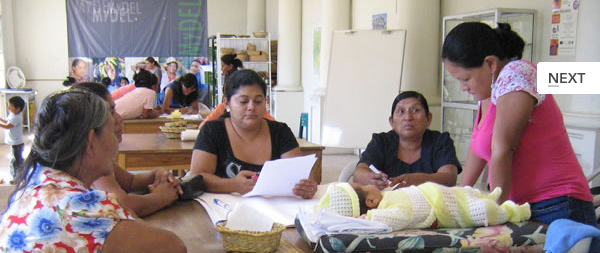We are Silvia Salinas-Mulder, Bolivian anthropologist, feminist activist and independent consultant, and Fabiola Amariles, Colombian economist, founder and director of Learning for Impact. We have worked for several years as external evaluators for development programs in Latin America. The following ideas may help to operationalize the principles of gender- and human rights (HR)-responsive evaluation in complex, multicultural contexts.
Lesson learned: Terms of Reference (TOR) for an evaluation are not engraved in stone.
Tip: Reframe the often conventional evaluation questions and other aspects of the evaluation process to ensure that gender and HR issues surface, and evidence of change (or no change) in women’s lives is gathered. Take into account context-specific issues and gender dynamics, as well as relevant cultural patterns, such as the effects of migration in the family roles and decision-making processes within some agricultural community settings.
Lesson learned: Some stakeholders are tired of being interviewed, while others – especially rural women- are eager to be heard.
Tip: Be creative; evaluation techniques are the means not the end, and can thus permanently be created, recreated and adapted to each situation and context. For example, use “conversatorios” (round table discussions), as opposed to focus groups, to gather people with diverse backgrounds and perspectives to discuss over a particular issue of the evaluation; participants usually appreciate these reflective spaces and feel motivated to speak “outside the box”, while evaluators take a holistic overview of the topic. Drawings, role plays and other popular education techniques may also facilitate participation of marginalized groups, including illiterate women.
Lesson learned: Answers to your questions may not contain key gender and HR issues to understand how change is occurring.
Tip: Awareness of specific cultural and gender communication patterns is crucial for an effective exchange. In any case, interviews should be dealt with as dialogues where people have the opportunity to express their priorities and points of view. Do not limit your interactions to a question-answer dynamic. Let people speak freely and “listen actively” to discover the essential. Respect and interpret the silences and do not insist on answers to your questions, rather focus on trying to understand the underlying meaning of each reaction. This will allow an eventual reconstruction of how change is occurring (Theory of Change) for the specific intervention and context, even if it has not been explicitly stated in the project design. Also, as evaluators we tend to focus on verbal communication, ignoring the importance of tone and gestures. Make sure you are alert to less explicit key messages.
Rad Resources:
- The United Nations Evaluation Group published an excellent resource for integrating Human Rights & Gender Equality in evaluation (2011).
- Click here for guidelines on designing a Theory of Change.
Do you have questions, concerns, kudos, or content to extend this aea365 contribution? Please add them in the comments section for this post on the aea365 webpage so that we may enrich our community of practice. Would you like to submit an aea365 Tip? Please send a note of interest to aea365@eval.org. aea365 is sponsored by the American Evaluation Association and provides a Tip-a-Day by and for evaluators.


Pingback: FIE TIG Week: Silvia Salinas Mulder and Fabiola Amariles on Latin American Feminist Perspectives on Gender Power Issues in Evaluation · AEA365